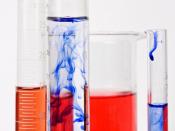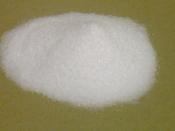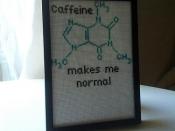Using Superscripts and Subscripts in Algebra and Chemistry.
Superscripts and subscripts are commonly used in mathematical equations and scientific formulas. In algebra, superscripts are primarily used, while in science, subscripts are primarily used. Let's look at a few examples.
Multiplication in Algebra - Superscripts:
Multiplication in algebra is usually demonstrated by writing two or more expressions together without a multiplication symbol. Example: a x b is written ab. Sometimes you may see a formula that is written ab4. The little, raised number is called an exponent. It indicates the number of times a quantity is multiplied by itself. Therefore, a x a is written a2. This is called the square of a. It means that "a" is multiplied by itself. If you want to multiply a x a x a, the formula is written a3. This is called the cube of "a". If you wanted to multiply a x a x a x a, the formula would be written as a4.
A typical formula used to multiply an expression consisting of two or more terms by a single term or expression would look like this: (5b2c+2d)(3bd).
Chemical Compounds in Chemistry - Subscripts:
In chemistry, chemical compounds have common names and are also represented by a formula. Many of the common names of chemical compounds are so familiar to us, yet the compound name sounds so scientific. For example, water is a chemical compound with which we are probably most familiar. Its common name is "water" and it is represented by the formula H2O. Laughing gas in another common name of a chemical compound. Its compound name is nitrous oxide and is represented by the formula N2O. Baking soda, or sodium bicarbonate, is represented by the formula NaHCO3. A compound which is not as familiar is ammonium hydroxide. However, when we...


